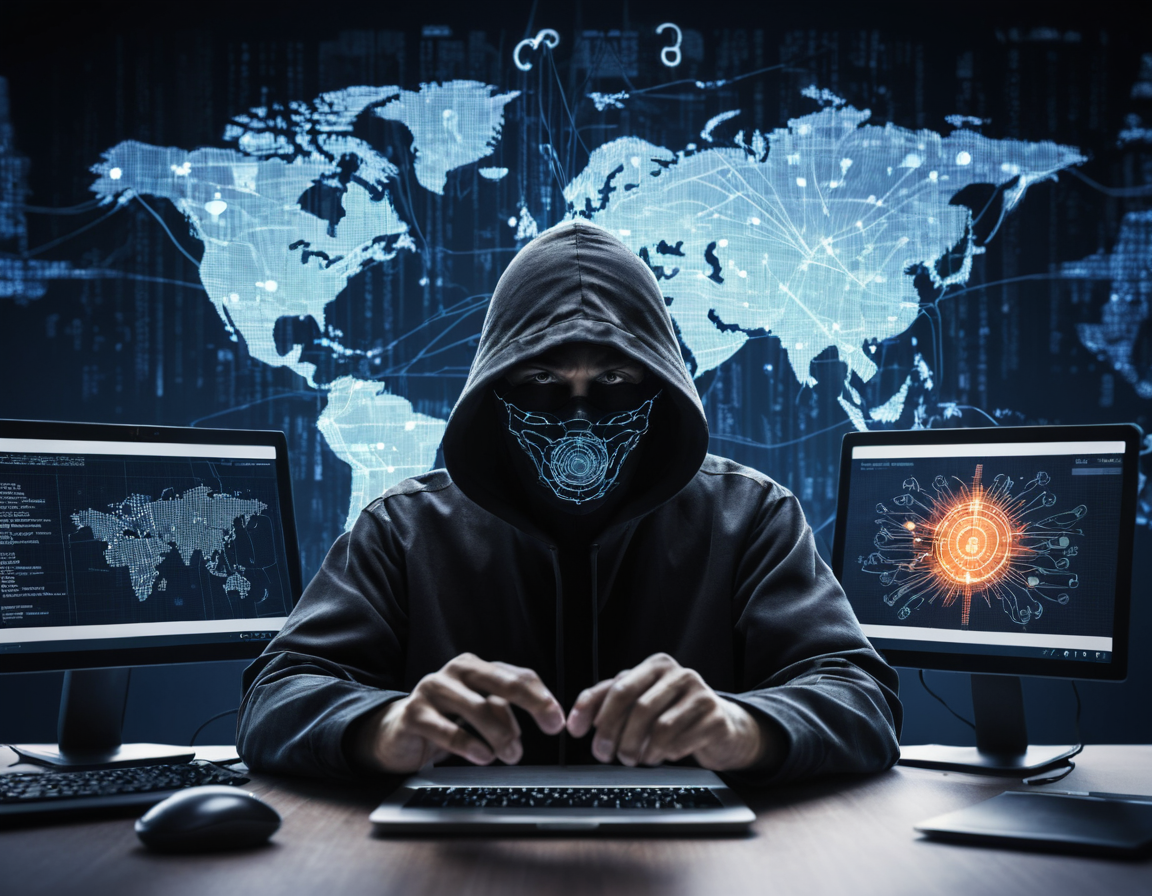Adres
Polska, Warszawa

Defending Against Cyber Attacks and Other Threats
The rise of cybercrime poses one of the most significant challenges to global security today. From ransomware attacks crippling billion-dollar companies to sophisticated nation-state espionage campaigns targeting critical infrastructure, no sector is immune to these threats. In this comprehensive exploration, we’ll uncover the tactics behind major cyberattacks, analyze the vulnerabilities they exploit, and discuss proactive measures to safeguard against these escalating dangers.
The Rising Tide of Cyber Attacks
Ransomware: A Growing Threat
Ransomware attacks have evolved from opportunistic breaches to calculated assaults targeting industries where disruption has the most devastating consequences.
• MGM Resorts Attack (2023):
• Attackers, including the hacker group Scattered Spider, paralyzed operations at MGM Resorts in Las Vegas. Slot machines went dark, elevators malfunctioned, and digital door keys failed.
• The group used social engineering to gain access. They impersonated an employee and convinced the tech help desk to reset a password, giving them the keys to MGM’s system.
• Impact: $100 million in lost revenue and millions more spent rebuilding systems.
• Caesars Entertainment Hack:
• Simultaneously targeted by the same attackers, Caesars paid a reported $15 million ransom to minimize disruptions.
The Techniques Behind Ransomware Attacks
1. Social Engineering:
• Exploiting human behavior is a hallmark of modern hacking. Attackers manipulate employees into providing access credentials through convincing lies and impersonations.
2. Malware Deployment:
• Once inside a network, attackers deploy malicious software to encrypt data and demand ransom in cryptocurrency, making the transactions hard to trace.
3. Ransomware-as-a-Service (RaaS):
• Russian groups like Black Cat offer RaaS to affiliates, enabling smaller groups like Scattered Spider to carry out sophisticated attacks.
The Financial and Operational Fallout
Ransomware is more than a financial burden; it disrupts operations on a massive scale:
• Healthcare Systems: In 2021, a ransomware attack on the Irish healthcare system canceled thousands of appointments and endangered patients’ lives.
• Critical Infrastructure: The 2021 Colonial Pipeline attack led to fuel shortages, showcasing the cascading effects of such breaches.
The Threat to Critical Infrastructure
The Vulnerability of Power Grids
Critical infrastructure, such as power grids, is particularly susceptible to cyberattacks:
• Fragmentation: The U.S. grid is made up of 3,000 entities with no centralized control. This decentralization creates blind spots in security.
• A Fragile System: Experts warn that knocking out just nine critical substations could lead to a coast-to-coast blackout.
Historical Attacks on Infrastructure
1. Ukraine Power Grid Attack (2015):
• Russian hackers disabled over 60 substations, leaving 230,000 people without electricity during winter. The attack demonstrated the devastating potential of cyberwarfare.
2. Saudi Aramco Oil Refinery Hack (2017):
• Attackers infiltrated safety systems designed to prevent catastrophic failures. Their aim was to trigger explosions, marking the first known attempt to cause mass casualties via cyberattack.
What’s at Stake?
Critical infrastructure attacks could cripple entire nations by:
• Cutting off essential utilities like electricity and water.
• Disrupting communication networks.
• Paralyzing financial systems.
Global Cyber Threats: The Players and Their Tactics
Russia: A Cyber Powerhouse
Russia’s state-sponsored hackers have perfected their craft, targeting adversaries worldwide:
• Colonial Pipeline (2021): A ransomware attack forced the shutdown of a vital U.S. fuel pipeline, causing widespread panic and economic loss.
• Collaboration with Criminal Gangs: Russian groups like Black Cat operate with impunity, using state-of-the-art malware.
China: Espionage at Scale
China focuses on large-scale cyber-espionage, stealing intellectual property and sensitive information:
• Targeted Sectors: Technology, healthcare, aviation, and academia.
• Tools of Espionage: China uses a mix of hacking, infiltration, and manipulation of employees through professional networking sites to gain access to valuable data.
The New Face of Cybercrime: The Comm
A subculture of English-speaking hackers known as “The Comm” has emerged:
• Members include teens as young as 13, operating on platforms like Telegram and Discord.
• They glorify cybercrime, targeting high-profile companies for monetary gain and notoriety.
Defense Strategies: How to Fight Back
Shields Up Initiative
The Cybersecurity and Infrastructure Security Agency (CISA) launched the “Shields Up” campaign to prepare businesses and individuals for potential attacks:
• Key Measures:
• Update systems and software regularly.
• Enable multi-factor authentication.
• Back up data securely and frequently.
• Monitor networks for suspicious activity.
Proactive Industry Practices
1. Ethical Hacking:
• Companies hire ethical hackers to stress-test their systems and uncover vulnerabilities before attackers can exploit them.
2. Public-Private Partnerships:
• Collaboration between governments and private companies enhances intelligence sharing and rapid response capabilities.
3. Zero Trust Architecture:
• Adopt a security model where no user or system is trusted by default, minimizing potential entry points for attackers.
Strengthening International Alliances
Global cyber threats require global solutions:
• The Five Eyes Alliance:
• The U.S., UK, Canada, Australia, and New Zealand share intelligence to counteract cyber and espionage threats.
• Intergovernmental Collaboration:
• Joint exercises and intelligence-sharing initiatives prepare nations for coordinated cyber responses.
The Road Ahead: Challenges and Opportunities
The Evolving Nature of Cyber Threats
As cybercriminals evolve, so must defenses:
• AI and Machine Learning: These technologies are being weaponized to develop more effective malware.
• The Insider Threat: Employees, whether intentional or negligent, remain a weak link in cybersecurity.
The Need for Modernization
Critical infrastructure, such as energy grids, must be updated:
• Governments should incentivize investments in secure, modern systems.
• Comprehensive audits and stress tests should become standard practice.
Educating the Public
Awareness is a critical component of cybersecurity:
• Teach individuals to recognize phishing attempts and scams.
• Promote best practices, such as using strong passwords and securing devices.
The cyber threat landscape is evolving at an alarming pace, but proactive measures can mitigate these risks. By investing in cybersecurity, fostering collaboration, and embracing modern defense strategies, we can build a safer digital world.
Explore More:
• Learn about the Shields Up Campaign.
• Discover the role of ethical hackers at OpenAI Cybersecurity.
• Read about ransomware trends in Cybersecurity Ventures.